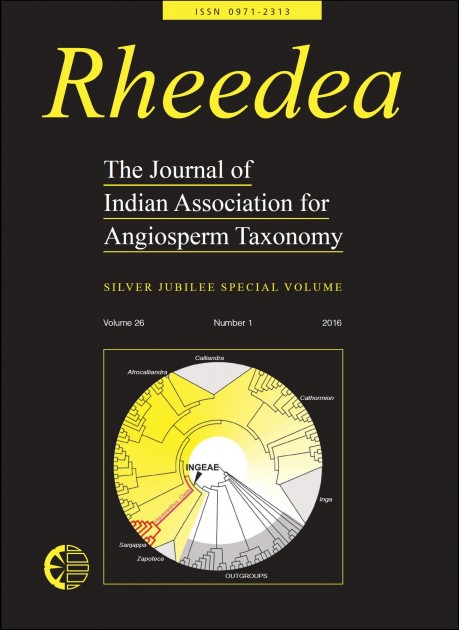Features of seeds of Podostemaceae and their survival strategy in freshwater ecosystems
Leleeka Devi M., Sanavar, Tandon R. & P.L. Uniyal
Published on : 01-Jan-2022
DOI : https://dx.doi.org/10.22244/rheedea.2016.26.01.05
DownloadAbstract
Podostemaceae are strictly aquatic angiosperms that are found attached to rocks, boulders and even on wood pieces under waterfalls and in rapidly flowing streams or rivers. Seeds of Podostemaceae are very small and are produced abundantly in capsules. They germinate readily when provided with light and water and they remain viable for 18 months when stored dry at room temperature. It is believed that seed dispersal may occur through biotic or abiotic agents although no vectors are known for any member of Podostemaceae. In nature, seeds disperse in December and they remain on dry rocks and germinate in June during the onset of monsoon showers. The seeds stick to the substratum with the help of a gum present in the seed coat. There are no projections like papillae or hooks that could help the seeds in their dispersal. Pollutants in the river affect the podostemads that lead to the extirpation of some populations. Lack of vectors, seed structure and nature of substratum and water chemistry may be the reasons for the limitation of distribution of the family Podostemaceae.
